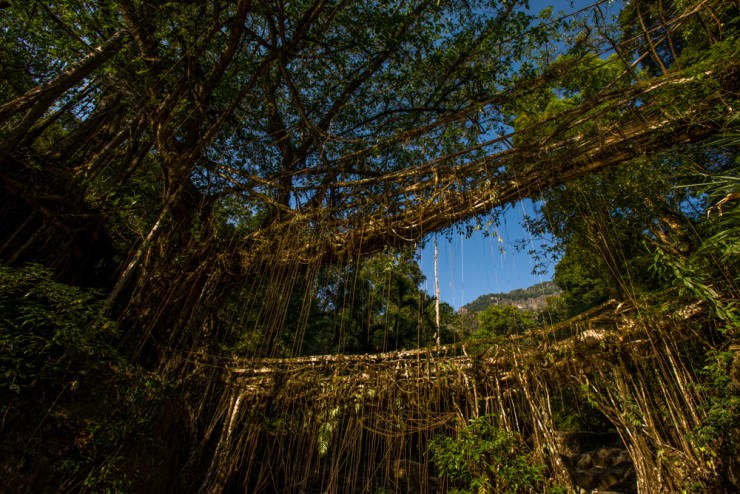
Asia is the largest and most populous continent on Earth, which is no surprise for its abundance of culture, beautiful landscapes, and of course, natural wonders.
Listed below are some of our favourite natural wonders in Asia:
Living Root Bridges, India
The living bridges of Cherrapunji, India are made from the roots of the Ficus elastica tree. This tree produces a series of secondary roots from higher up its trunk and can comfortably perch atop huge boulders along the riverbanks, or even in the middle of the rivers themselves.
A living root bridge is formed by guiding the pliable roots of the Ficus elastica tree across a stream or river, and then allowing the roots to grow and strengthen over time until they can hold the weight of a human being.
As long as the tree from which it is formed remains healthy, the roots in the bridge can naturally grow thick and strengthen. New roots can grow throughout the tree’s life and must be pruned or manipulated to strengthen the bridge.
Hang Son Doong Cave, Vietnam
Hang Son Doong Cave is considered the largest cave in the world, based on volume. According to Oxalis, the only company licensed to bring tourists into the cave, it is so big that you could fit a New York City block with 40-story skyscrapers inside it.
Set within Phong Nha-Ke Bang National Park, Vietnam, it was first discovered in 1991 by a local named Ho Khanh and was only explored by the British Cave Research Association in 2009.
Its name, Hang Sơn Đoòng, is variously translated from Vietnamese as ‘cave of the mountain river’ or ‘cave of mountains behind Đoòng [village].’
Zhangye Danxia Landform, China
Also known as the Rainbow Mountains, the Zhangye Danxia Landform is a geological wonder of the world as the rock formations and rolling hills almost look as if they were painted.
The Zhangye Danxia National Park is located in the Gansu province in China’s northwest covering 200 square miles. The site was named a UNESCO World Heritage Site in 2009.
The colorful landscapes were created by sandstone and minerals being layered atop each other over the years with the tectonic plates shifting creating angled painted layers across the rock formation and sandstone rolling hills.
Rain, wind, and time have further sculpted the rock formations and rolling hills into various displays of pillars and ravines.
Dead Sea
The Dead Sea is a salt lake bordered by Jordan to the east and Israel and the West Bank to the west. It lies in the Jordan Rift Valley, and its main tributary is the Jordan River.
The lake’s surface is 430.5 metres (1,412 ft) below sea level, making its shores the lowest land-based elevation on Earth. It is 304 m (997 ft) deep, the deepest hypersaline lake in the world.
With a salinity of 342 g/kg, or 34.2% (in 2011), it is one of the world’s saltiest bodies of water – 9.6 times as salty as the ocean. This salinity makes for a harsh environment in which plants and animals cannot flourish, hence its name.
Chocolate Hills, the Philippines
The Chocolate Hills are a geological formation in the Bohol province of the Philippines. There are at least 1,260 hills but there may be as many as 1,776 hills spread over an area of more than 50 square kilometres (20 sq mi).
In the rainy season, the grass blanketing the hills gives them a soft and lush appearance. While in the summer, the vegetation dies off and turns to a chocolatey brown hue, giving them their name.
